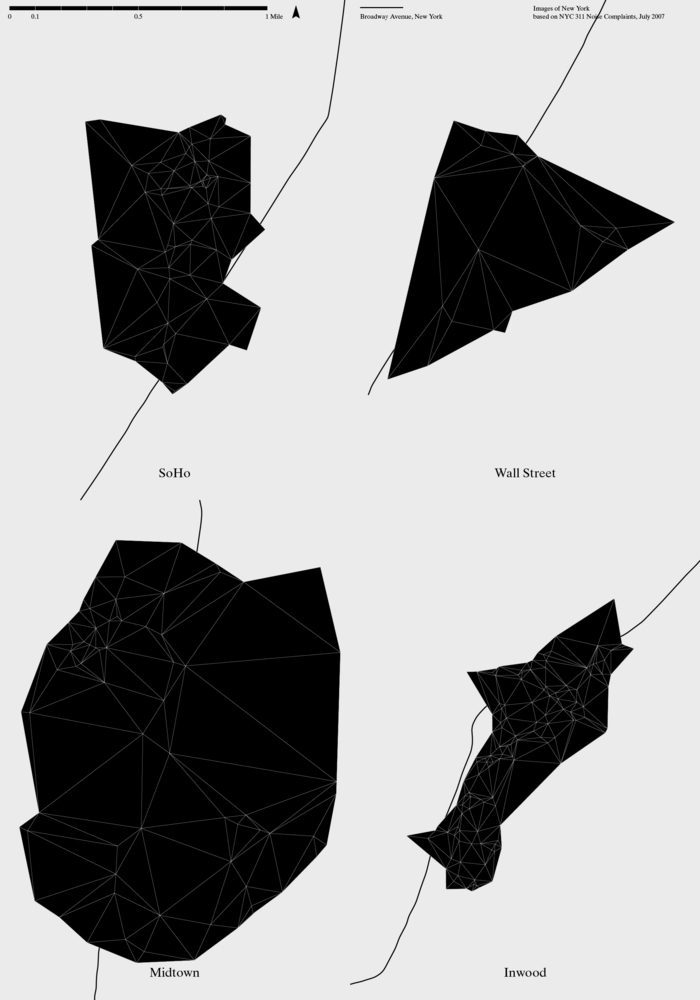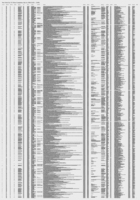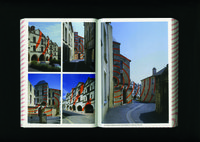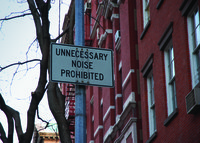Experiencing a Soundscape
Hoon Kim-
-

- Hoon Kim for the Architectural Association, 2009
-
Visibility is potentially activated by motion, by desire.
Allen S. Weiss
Felice Varini’s architectonic paintings encourage citizens to experience architecture, spaces, and environments. His paintings, applied to urban elements such as walls, windows, columns, and staircases, appear intact from one vantage point and “broken” from others. In this way, the paintings cross multiple dimensions. Time, as an element of architecture, allows observation and experience to shape one’s spatial perception.
Over time, accumulated observations create an image, which in turn affects the original perception. This elliptical experience shifts between image and experience to continually re-write the image of a space.
Caller states that there is someone sitting in an alley playing extremely loud music under her window. Caller is unable to do anything as a result of the noise.
NYC 311 Noise Complaints report in Inwood, July 2004
The use of land contributes to the image of a space. People experiencing noise pollution in New York City report disturbances through 311 phone calls. Midtown Manhattan is full of various blaring facilities and boisterous areas, a theater district, Times Square, constant traffic. What would seem to be the noisiest neighborhood is surprisingly not listed in the top ten neighborhood complaints, according to 311 reports. Ironically, Inwood, an ostensibly quiet enclave of Manhattan, reports the highest rate of noise pollution even though half of the area is a park bordering the Hudson River. Upon further investigation, this fact is due to its land use, which combines residential buildings (most of which is low income housing) with open spaces. A case in point: residents stay and play outside of the buildings during the summer since they do not have air-conditioners. As a result, Inwood ranks first in noisiness in New York City, accounting for over fifty percent of total complaints.
-
-

- Hoon Kim for the Architectural Association, 2009
-
-
-

- Felice Varini / Point of View, Lars Müller Publishers, 2004
-
-
-

- Signage by Dept of Transportation, New York. Photo: Hoon Kim
-